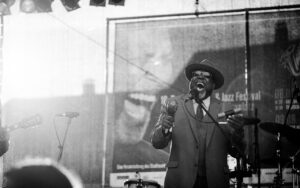The song “Paint it, Black” is one of the most famous works of The Rolling Stones. It is perhaps second in popularity only to the band’s other hit, “(I Can’t Get No) Satisfaction”.
Despite more than half a century of history, The Rolling Stones song “Paint it, Black” is a “must have” in the playlists of several generations of rock’n’roll fans and self-respecting rock radio stations. With some mystical appeal, it doesn’t get boring even after thousands of listens.
History of the creation of the song “Paint it, Black”
The release date of “Paint it, Black” as a single fell on “Bloody Friday” – May 13th, 1966 (in the UK, and May 7th in the USA).
Keith Richards and Mick Jagger are believed to be behind its creation, for the most part. But it wouldn’t be that catchy hit without Brian Jones’ original riff and Bill Wyman’s work with the lows.
The original plan was for the song to be more rhythmic, groovy and funky. But in the end they decided to replace the regular guitar with an Indian sitar, which the band brought back from Fiji. And, according to Richards, that’s what made the whole song.
Later music critics put forward theories that The Rolling Stones in “Paint it, Black” copied The Beatles, who used sitar in the song “Norwegian Wood” (Jones was familiar with the “Beatle” George Harrison, who was fond of this instrument). But they might as well have criticized the band for playing guitar, drums or any other musical instrument anyone had played before.
Besides, though the official version claims that the Indian instrument appeared in the band’s repertoire under the influence of the Beatles, Mick Jagger mentioned in his interview a “weirdo” playing sitar in some jazz band whom the Rollings had met in the studio while recording “Paint it, Black”. They supposedly liked the unusual muffled sound of the sitar so much that they decided to make it the “basis” for a future hit.
In general, it doesn’t matter how, but it happened, and the instrument was definitely the right one – with an ordinary guitar this song would have hardly become so memorable.
Another experiment was realized by Bill Wyman, who wanted to shade the soft sound of the sitar with deeper bass. But since it was impossible to achieve the desired effect with a bass guitar, Bill sat down at the electric organ. Or rather, lay down. He sprawled out on the floor and pounded the pedals with his fists.
In contrast to the musical component, which was done by almost all the members of The Rolling Stones, the lyrics of “Paint it, Black” were composed by Mick Jagger from the first to the last word.
The Secrets Behind the Red Door
As is usually the case with most classic rock hits, the song has no special meaning. The lyrics of “Paint it, Black” are simple: a guy lost his lover, he can’t stand the colorful life going on around him, and he wants everything around him to be as black and dreary as he feels.
But fans couldn’t put up with such minimalism. So they came up with several alternative interpretations.
Trying to attribute a special meaning to the lyrics of “Paint it, Black”, the Rolling fans clung to almost the only metaphor – the “red door”. And they rushed to invent what allegory was hidden here. It was associated with the door to a brothel, the entrance to a Catholic church and even the color of the Soviet Union flag.
And in the 80s, the movie Full Metal Jacket and the TV series Deadline gave new reasons to attribute a non-existent meaning to the lyrics of the song “Paint it, Black” – they began to correlate it with the war in Vietnam.
To be fair, though, it is worth mentioning that the participants of the Vietnam War noted that The Rolling Stones’ hit “Paint it, Black” really meant a lot to them: it conveyed the general mood prevailing in the ranks of the American army and fit perfectly into their surroundings.
Also adding to the confusion was a mistake by the Decca record label. It released the single with the mistake of putting a comma before the word “black”. A fresh version of the translation of “Paint it, Black” took on new colors. A racist meaning was attributed to it.
But Mick Jagger stubbornly refuted all the speculations. According to him, the music and lyrics of “Paint it, Black” were written in an atmosphere of foolishness. For them, the song was a kind of comedy track.
But the most interesting thing is that after the recording, the musicians felt as if they didn’t write the song. The familiar parts, played a couple thousand times in three days, became alien.
“Sometimes you feel like you didn’t write them. The song ‘Paint it, Black’ is a little out of the flow. Where it came from, I don’t know,” Keith Richards admitted.
“Modest” successes of “Paint it, Black.”
This song was the title track on the album “Aftermath” (1966) and immediately conquered the English-language charts – it settled at the first positions on Billboard and the UK Chart.
The song was also at the top of the charts in Canada, as well as in the Dutch Top 40. It should be noted that the latter placed the single on the first position again almost 25 years later, in 1990.
In 2004, a music magazine of the same name with the band gave the song number 174 on the list of 500 greatest rock hits. Later on, the track gave up a little bit and dropped down to No. 176.


